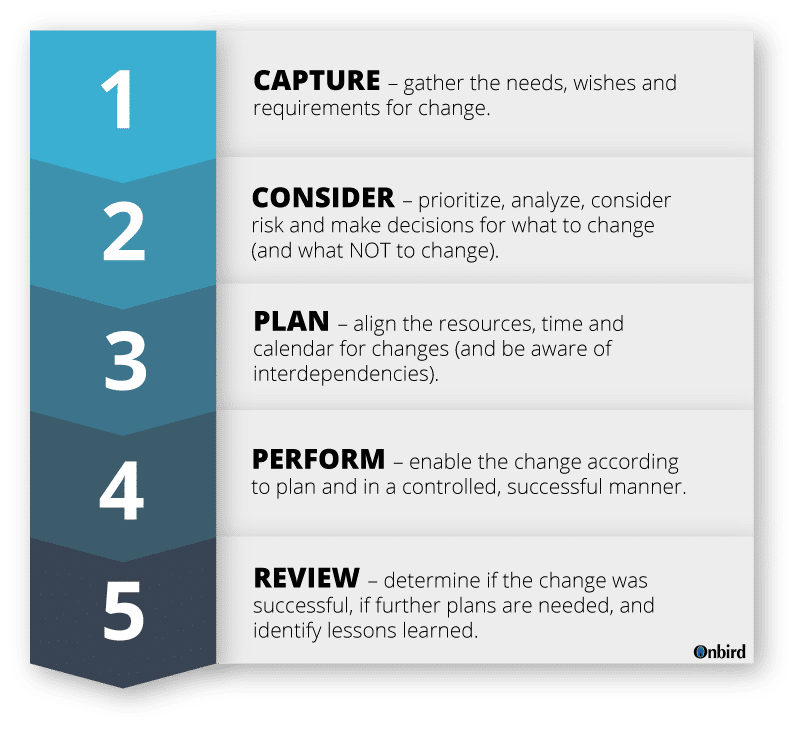Understanding Change Management, Takt Time and Lean
The management of change
Perhaps the trickiest and most opportune aspect of leading World Class IT is establishing successful management of change. We’ve heard it all before – the business world is moving faster than ever and thereby places its demand upon a quick-moving IT as well.
As an IT leader, we need to both establish stability today AND prepare our organization for change responsiveness tomorrow. Therein lies the tricky opportunity, and IT Service Management and Lean IT principles can help us. How? By helping us to align our Change Management process and capacity with the Takt Time of business demand.
Over two blogposts I thought we could take a look at what this is, why understanding change management is important and how we might apply some simple principles.
Understanding Change Management
Change Management is undoubtedly the most complex of the numerous processes outlined in IT Service Management/ITIL. The purpose of the process is to facilitate and manage necessary changes, ensuring the ongoing effectiveness of IT services and efficiency of their delivery. Successful Change Management expresses itself in competitive IT services, robust functionality, dependable delivery with few incidents and harmonious vendor-customer relationships.
The classic and practical process maps contain many steps – my brain likes simple and I like coming back to five steps for managing change:

- Capture
Gather the needs, wishes and requirements for change. - Consider
Prioritize, analyze, consider risk and make decisions for what to change (and what NOT to change). - Plan
Align the resources, time and calendar for changes (and be aware of interdependencies). - Perform
Enable the change according to plan and in a controlled, successful manner. - Review
Determine if the change was successful, if further plans are needed, and identify lessons learned.
ITIL-kurs och certifiering
Lär dig mer om ITIL med vår populära ITIL Foundation – massor med inlärning och noll PowerPoint!
Takt time
Among the emphasized principles of Lean and Lean IT we find the concept of flow. This idea simplified is that a delivery process can hold a constant, efficient flow of transforming inputs to valuable outputs.
As the process creates value, it achieves maximum “lean-ness” by minimizing waste (for example waiting) and processing uniform, single units one at a time – consistently, predictably and quickly, all the while not sacrificing quality.
In order to ensure process flow it becomes therefore important to ensure that the pace of our process is correct, i.e. that the pace of output from the process is meeting customer demand. This is what is called Takt Time in Lean.
Like the metronome we use to play piano in the correct rhythm, Takt Time helps us to understand the correct speed of production in order to keep pace.
So what does Takt have to do with IT Change?
In order to deliver successful Change Management, we need to prepare a process with the correct competency, capacity and speed in order to survive and even thrive.
We need to balance and manage the many changes that show up every day – changes such as additions of hardware, extended service hours, software code changes, or wonderful new devices that are “must haves”. World Class IT mandates a Change Management process that keeps up to Takt Time.
Like the metronome we use to play piano in the correct rhythm, Takt Time helps us to understand the correct speed of production in order to keep pace.

The recurring challenge is the pace and volume of change. A bad storm ruins our beautiful IT day – a change gets stuck, a release proves faulty or a massive transformation arises and throws the delicate change process off course.
Soon enough, the volume of change has overwhelmed the system, IT is on its heels and resistance to change appears. Ineffective Change Management begins to express itself in process bureaucracy, long delays, difficult meetings and operational faults.
And this is where IT leaders time and again tell me how it gets extra tricky. In my next blog post I’ll explore this further, and tie Takt and Change together with some simple steps for weathering the storm of IT change.
När är ledarskapet det största hindret till flöde?
I vår strävan efter högre effektivitet, snabbare leveranser och bättre flöde är det lätt att förbise en avgörande faktor: ledarskapet. Ibland är det just vi som leder som skapar de största hindren för flöde och värdeskapande.
Kartläggning av värdeflöden
Att förstå hur arbetet faktiskt flyter genom organisationen från idé till kund är avgörande för att lyckas med förbättringar. Här berättar vi hur en värdeflödeskartläggning kan hjälpa dig till effektivare flöden, engagerade team och ökad kundnöjdhet.

